
A freshly mixed bag at Tête-à-Tête's Opera Festival
ReviewTwo contrasting performances were presented in this back-to-back evening of theatre. First up was Of Body and Ghost; a dance-theatre-opera collaboration between composer/musician Kris Apple, writer/dramaturg Roswitha Gerlitz and director/choreographer Yolande Snaith that investigated the aging body through sound, movement, and storytelling.
With a single singer, violin, and electronics, they were able to create a sound that felt infinite.
This was a beautiful and contemplative performance. The music was atmospheric and more consequential than a driving force for the storyline. With a single singer, violin, and electronics, they were able to create a sound that felt infinite; reverberating around the space, echoing itself, and repeating in endless patterns. The music sometimes took the forefront and sometimes provided a backdrop for Snaith’s choreography. A distorted voiceover listed facts about the aging human body in a robotic tone as Snaith danced inside of a circle of salt; responding to the words, exploring the limits of her body and its abilities.
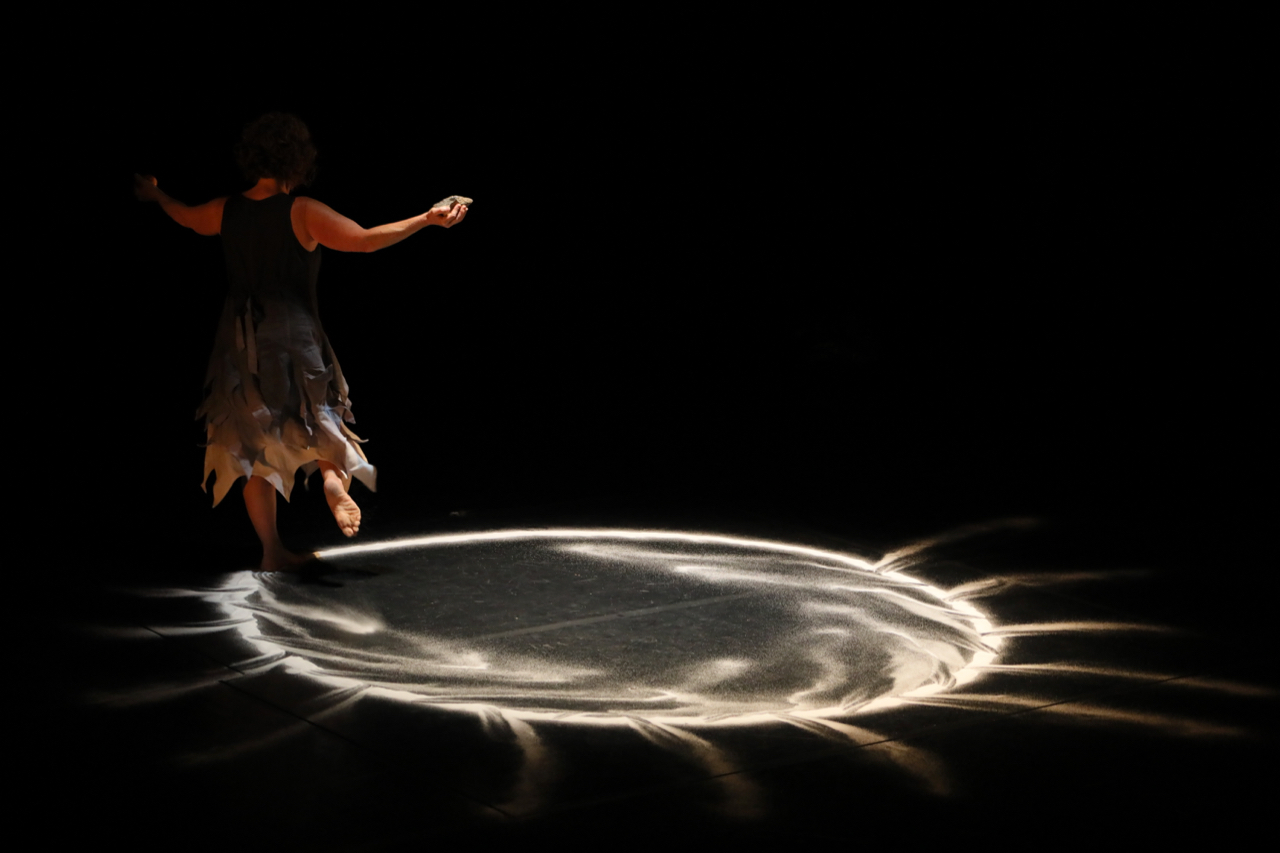
It became clear from quite early on that Snaide was the main character in this story and Barbara Byers, who provided the vocals, was a sympathetic yet removed and otherworldly onlooker. Snaide’s wrestling with her understanding of her own aging body was visceral. In a poignant sequence, she struggled to drag a heavy garbage bag across the stage. When she finally managed to lift it, she promptly began to tear it apart, allowing the soil inside of it to spill all over herself and the floor around her, almost as if it had come from inside of her.
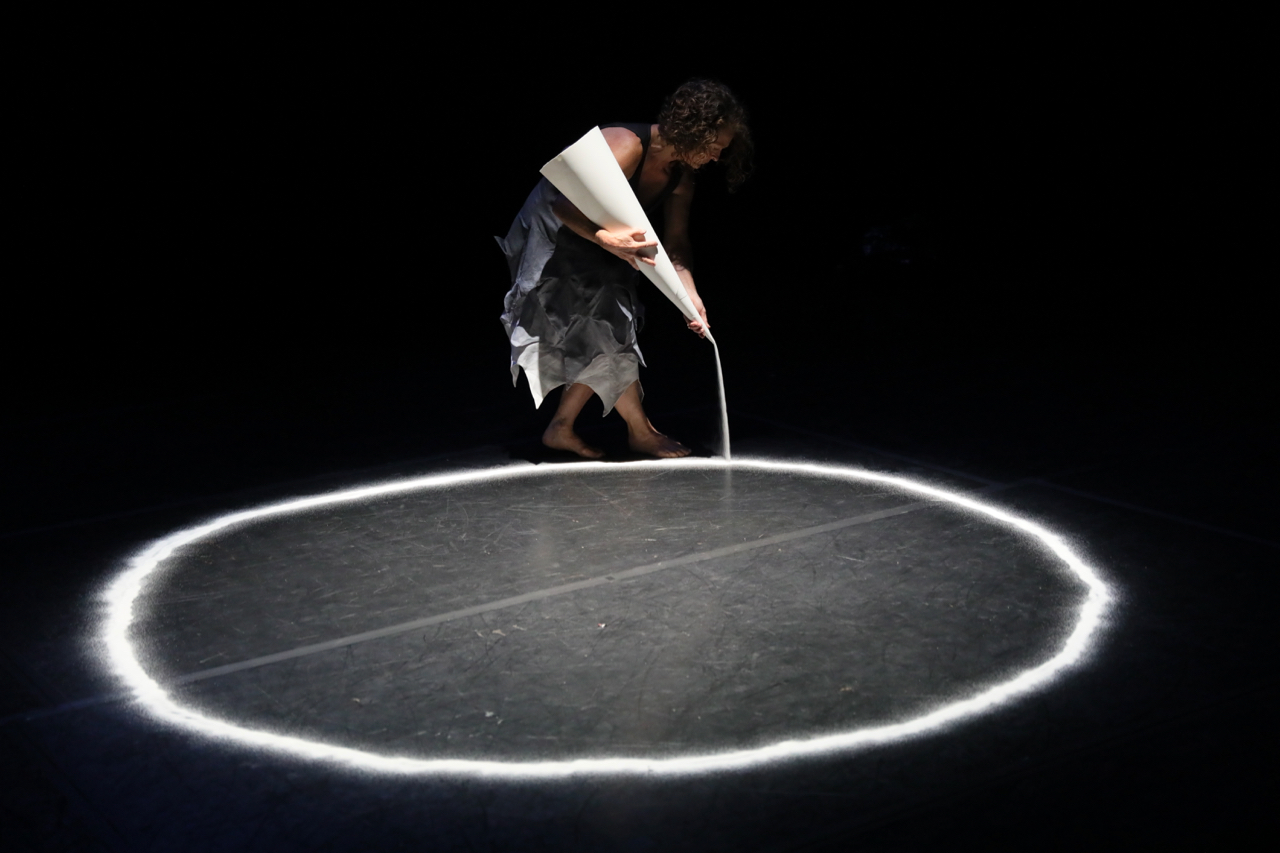
It was a physical representation of the expulsion of her fears, anxieties, and burdens. She then proceeded to lie on the mound of dirt face down, breathing laboriously into the microphone and telling a humorous but heart-breaking story about her desire to become a tree when she dies. It was a full circle exploration of her relationship with death and it seems that at the end she finally, if not somewhat begrudgingly, come to terms with her own mortality. A thought-provoking and emotionally stimulating piece.
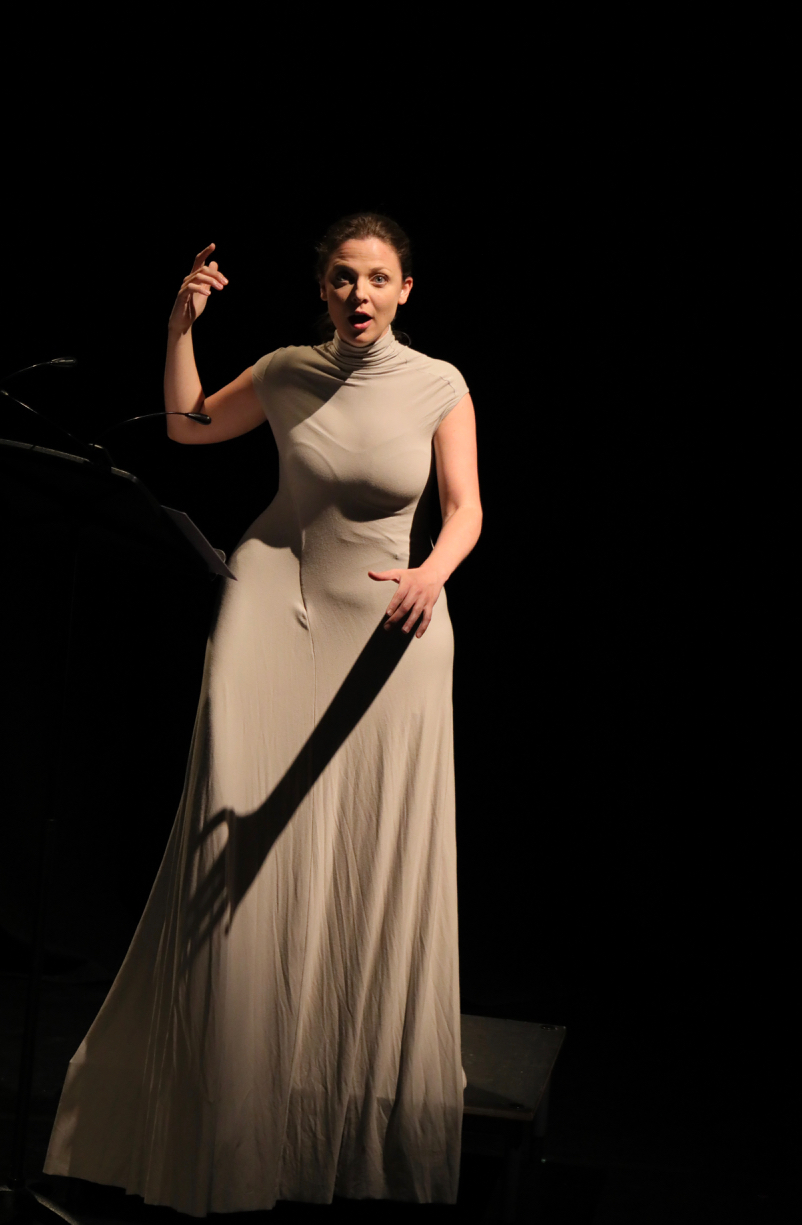
After a brief intermission the audience reassembled in the theatre for Alistair White’s ROBE, the composer’s newest project and the follow up to the award-winning WEAR. Though conceptually and visually stunning with its purpose created high fashion costume pieces, the story line was buried beneath convoluted language, inaudible text, and overly complicated melodic lines. Scored for piano, percussion, flute, and four singers, the piece had a relentless and widely unvaried texture with very few moments that broke from this.
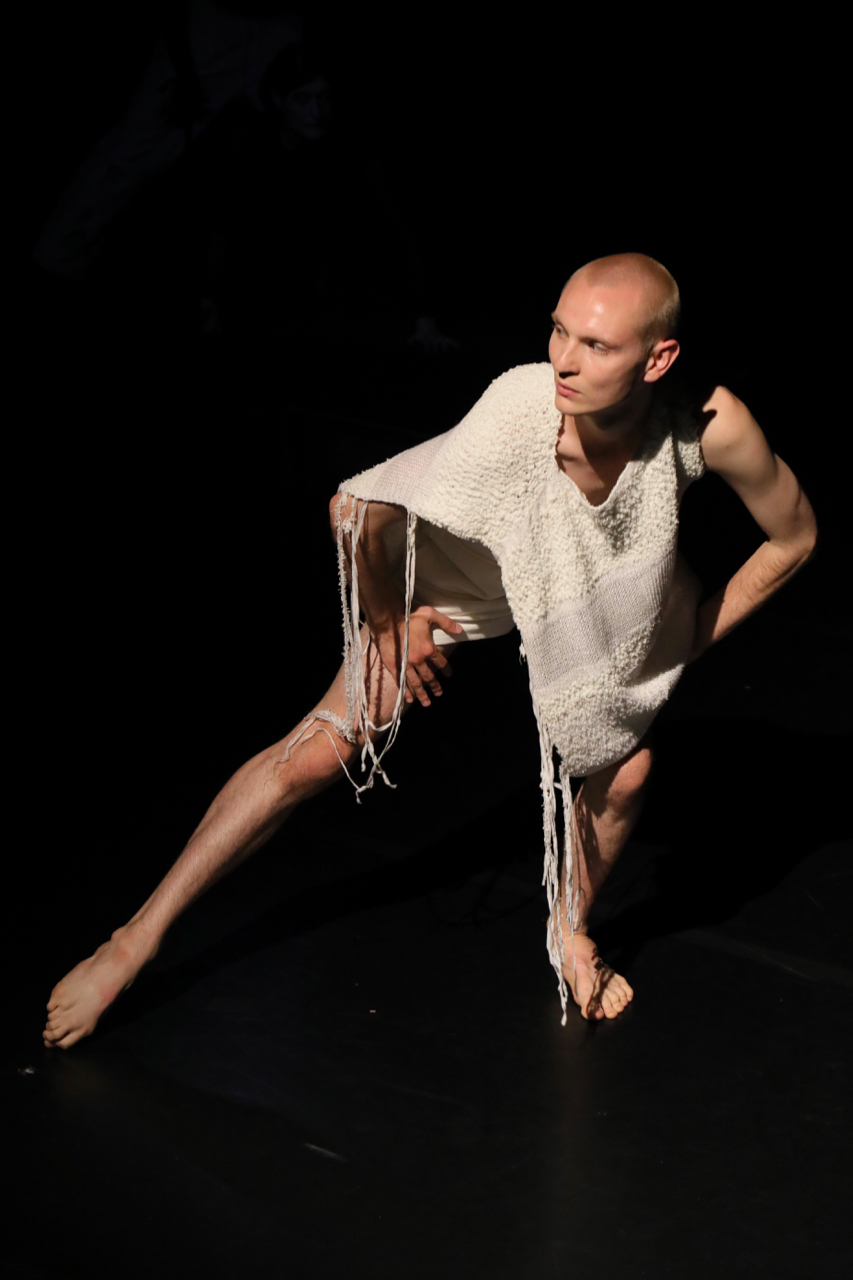
It was highly self-reflective and self-aware music that read as slightly pretentious and inaccessible. I can understand the desire to experiment with a form to push it as far as it will go, but to create something that exists purely for its complexity I find is a challenging idea for contemporary opera.
Moments of dialogue were few and far between and the direction lacked clarity and intention.
Performers were limited by the beautiful yet cumbersome costume pieces and the necessity to be close to their scores. Moments of dialogue were few and far between and the direction lacked clarity and intention. Each character had distinctive movements, setting them apart from each other and creating variation on a fairly static stage but with no explanation or context for who these characters were, their performances though all expertly sung, lacked meaning.
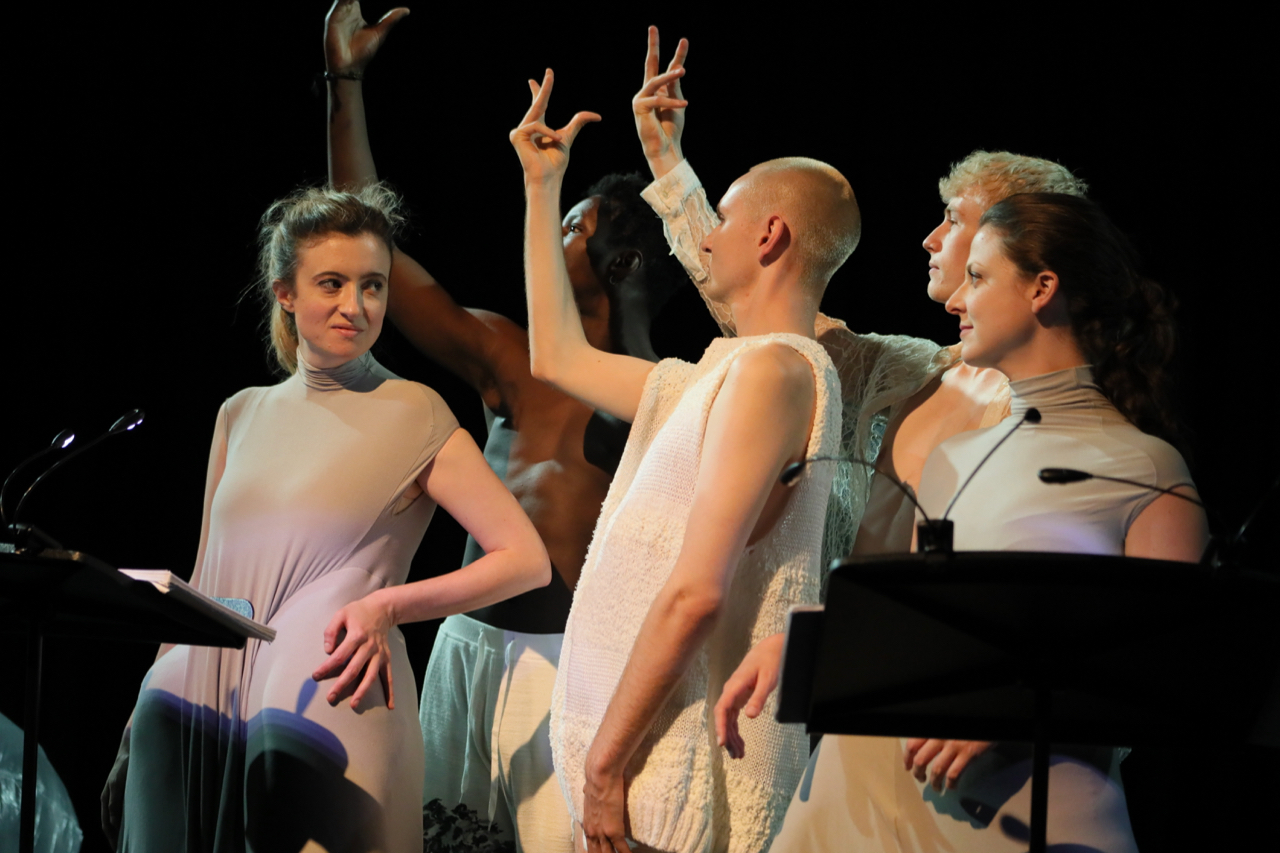
The three male dancers were the most engaging aspect of a performance that left me confused and somewhat frustrated. They interpreted the musical landscape with their bodies in a way that began to make sense of it. They brought the stage to life with their freedom of movement; a luxury the singers did not share. The most visually stimulating moments were those when the dancers interacted with the singers onstage, mirroring each other’s movements.
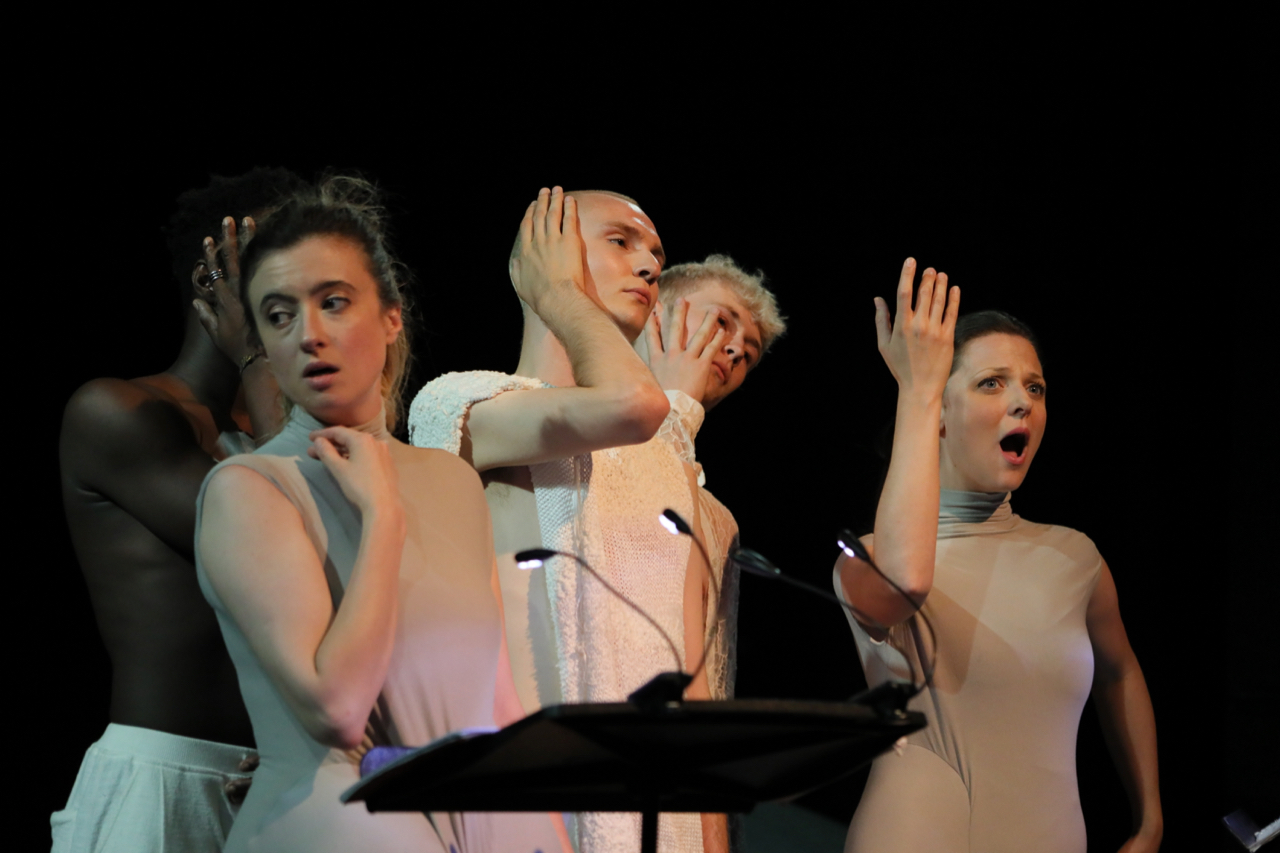
What I like about the Tête-à-Tête Opera Festival is that it is always a mixed bag. It is an incredibly liberating thing to watch so many creative performers and theatre-makers experiment with the limitations of the form. Programming is always fresh and varied and tickets are inexpensive which easily allows audiences to attend multiple performances over the course of the festival. And their cross arts content draws in creatives who are new to opera; ever expanding its network and continuing the conversation.


Comments